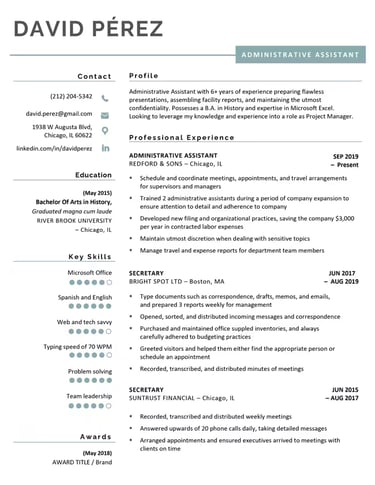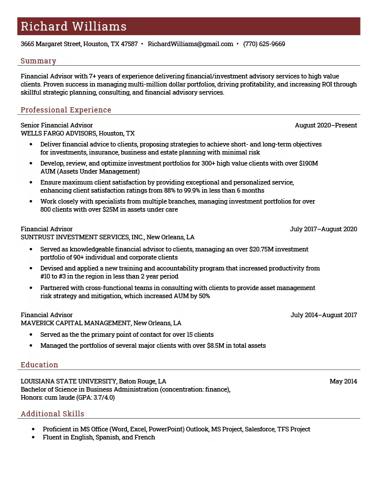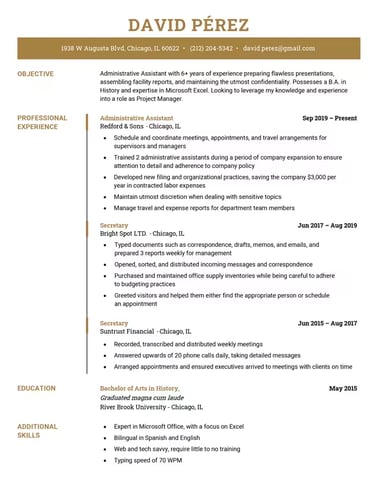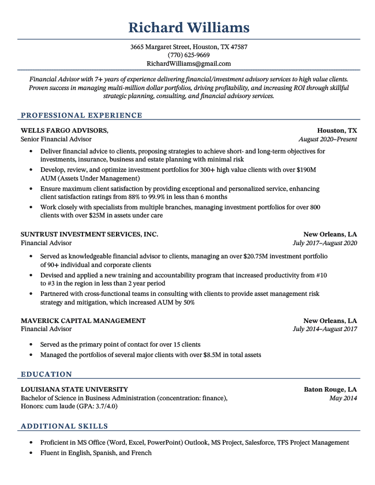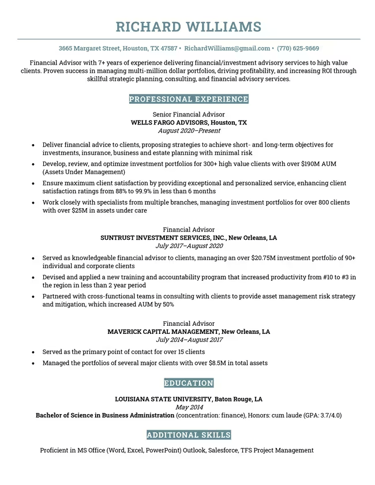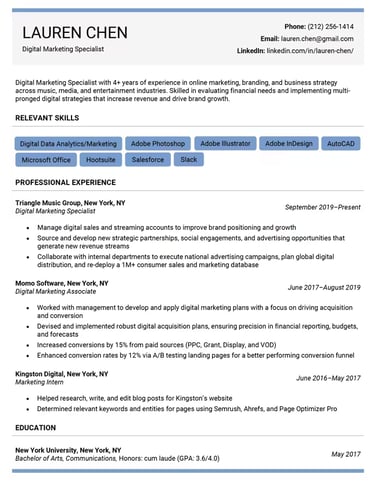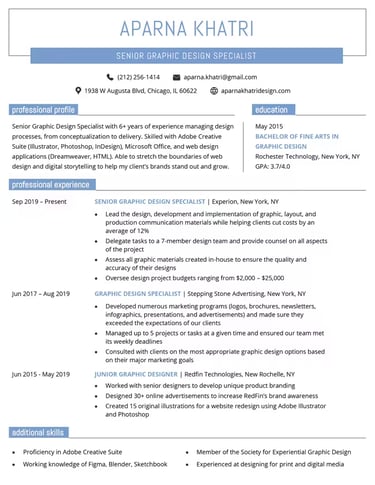The Finance Leader's Guide: Quantifying Your Resume Experience
A well-crafted resume is more than just a list of job duties—it’s a compelling story of your accomplishments, backed by measurable results.
RESUMES
Akshata Bhat
2/19/20252 min read


What and How to Quantify Your Experience on Your Resume
A well-crafted resume is more than just a list of job duties—it’s a compelling story of your accomplishments, backed by measurable results. Employers and hiring managers are drawn to quantifiable achievements that clearly demonstrate your value. But how exactly do you quantify your experience effectively? This guide will help you understand what to quantify and how to do it with impact.
Why Quantification Matters
Numbers stand out. When you use data to describe your achievements, you provide concrete evidence of your contributions. This helps recruiters and hiring managers quickly grasp the scope of your impact. Instead of saying you “improved sales,” stating that you “increased sales revenue by 30% in six months” makes your success tangible.
What to Quantify on Your Resume
Almost any job role involves performance metrics that can be measured. Here are some key areas where you can introduce quantifiable data:
Revenue and Sales Growth – If you worked in sales, marketing, or business development, highlight revenue increases, conversion rates, or customer acquisition numbers.
Example: “Increased customer retention by 25% through a targeted engagement strategy.”
Efficiency Improvements – Show how your efforts saved time, reduced costs, or optimized workflows.
Example: “Implemented a new inventory system, reducing order processing time by 40%.”
Productivity and Output – Highlight how much work you handled, whether it’s the number of projects completed, articles written, or products developed.
Example: “Managed a team that completed 50+ client projects per year, exceeding targets by 20%.”
Customer Satisfaction and Engagement – Demonstrate how your work improved user experience, retention rates, or client feedback scores.
Example: “Boosted customer satisfaction scores from 80% to 95% within one year.”
Cost Savings – Employers appreciate candidates who have contributed to reducing expenses.
Example: “Negotiated new vendor contracts, saving the company $100,000 annually.”
Leadership and Team Growth – If you led or mentored a team, indicate improvements in employee performance, retention, or hiring success.
Example: “Trained 15 junior employees, increasing overall department efficiency by 30%.”
How to Effectively Quantify Your Experience
Gather Your Data – Think back to your achievements and identify numbers that support them. Use performance reports, sales figures, project completion rates, or client feedback.
Use Action-Oriented Language – Start your bullet points with strong action verbs like “increased,” “boosted,” “streamlined,” or “generated.”
Be Specific and Honest – Ensure that your numbers are accurate and verifiable. Exaggeration can backfire during interviews.
Compare for Impact – Whenever possible, show improvements relative to a previous state or industry benchmark.
Example: “Reduced processing errors by 50% compared to the previous year.”
Use Ranges If Exact Numbers Aren’t Available – If you don’t have precise data, use approximate values or percentages.
Example: “Handled an average of 20-30 client inquiries per day, improving response times by 15%.”
Final Thoughts
Quantifying your experience on your resume is one of the most effective ways to stand out in today’s competitive job market. By presenting clear, data-driven achievements, you make it easier for employers to understand the impact you’ve had in your previous roles. Take the time to analyze your accomplishments, put them into numbers, and craft a resume that truly showcases your value.
Assistance
© 2025. All rights reserved.
Please note that none of my services are available for Per Scholas learners and alumni. As a Per Scholas employee, I will assist them for free. My freelance work is conducted outside of my professional role, in compliance with the non-solicitation policy
